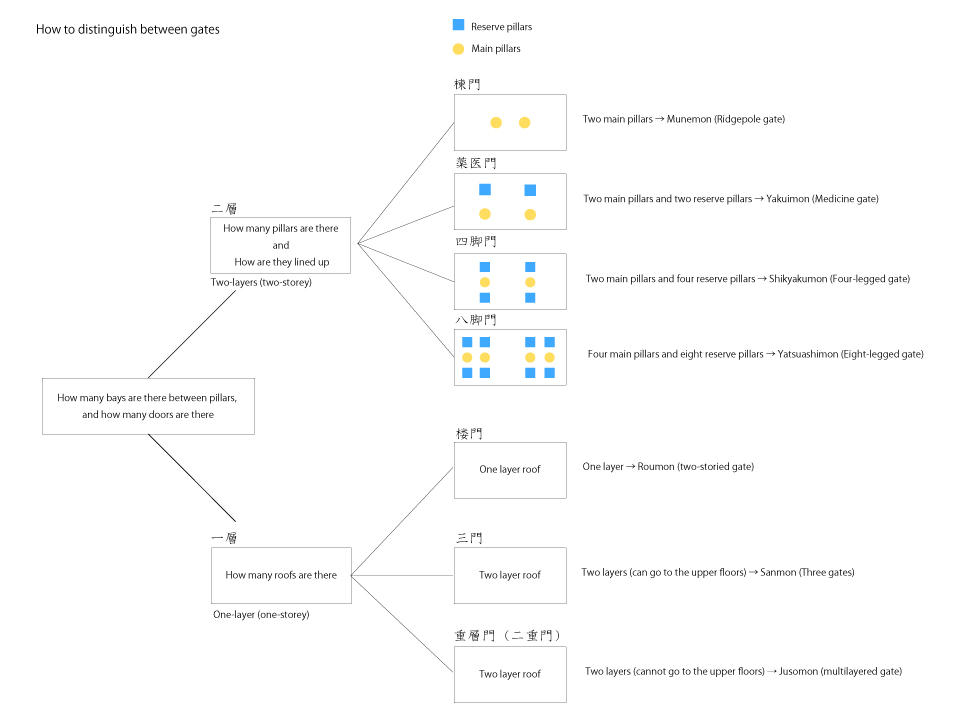Temple Gate : Temples
- Published 2010.7.13
As is the same with shrines, there exist many different types of temple gates. Even if you summarize it with one word, the size and form of each gate can be completely different.
How to distinguish between gates
First, looking directly as the gate, count how many bays between pillars there are (spaces between pillars), and the number of doors between the pillars. How to count these are, there are one, two, three spaces, and one, two, three doors. For example, the South gate at Todai-ji temple’╝łµØ▒Õż¦Õ»║ÕŹŚÕż¦ķ¢Ć’╝ē is a five space, three door gate (there are five spaces between pillars, and three doors between pillars).
Next, you have to look at where the gate is one-layer (one-storey), or two-layers (two-storey). In the case of a one-storey, the number of pillars and how they are lined up, as well as the shape of the roof defines how they are classified. For two-storey gates, it is how many roofs there are, and whether or not it is possible to go to the upper storeys. For example, the south gate at Todai-ji temple is a two-storey gate, the second floor cannot be reached (multilayered gate). As far as this classification is concerned, please take a look at the chart on the next page, which will explain things further.
How many bays are there between pillars, and how many doors are there
- One layer
- Two layers
One layer / How many roofs are there
| Two layers roof (can go to the upper floors) | Sanmon õĖēķ¢Ć (Three gates) |
| Two layers roof (cannot go to the upper floors) | Jusomon ķćŹÕ▒żķ¢Ć (multilayered gate) |
| One layer roof | Roumon µź╝ķ¢Ć (two-storied gate) |
Two layers / How many pillars are there and how are they lined up
| Two main pillars | Munemon µŻ¤ķ¢Ć (Ridgepole gate) |
| Two main pillars and two reserve pillars | Yakuimon Ķ¢¼Õī╗ķ¢Ć (Medicine gate) |
| Two main pillars and four reserve pillars | Yotsuashimon ÕøøĶäÜķ¢Ć (Four-legged gate) |
| Four main pillars and eight reserve pillars | Yatsuashimon Õģ½ĶäÜķ¢Ć (Eight-legged gate) |
Chart

